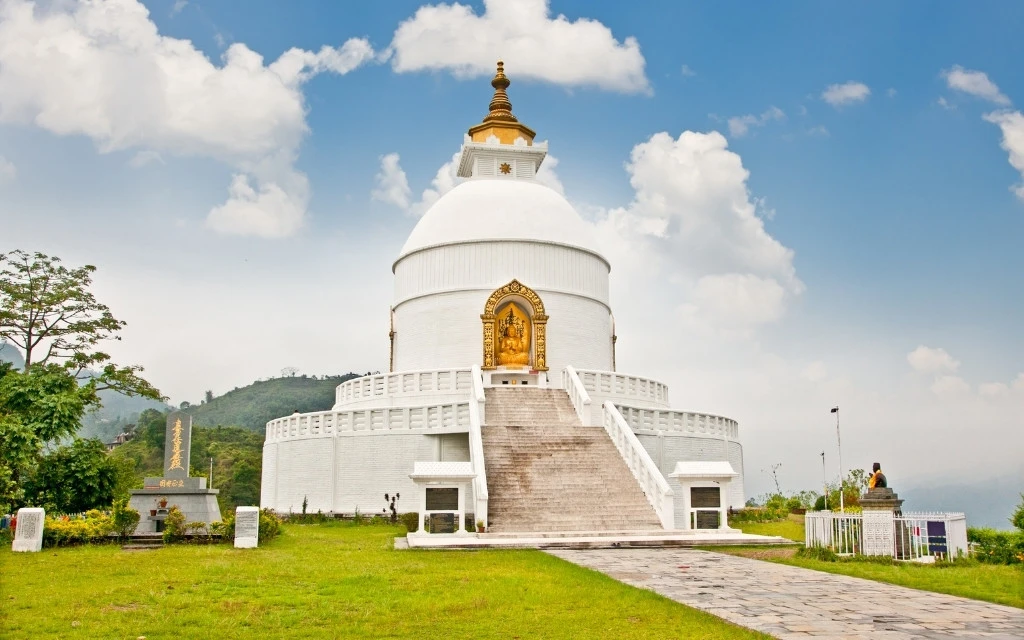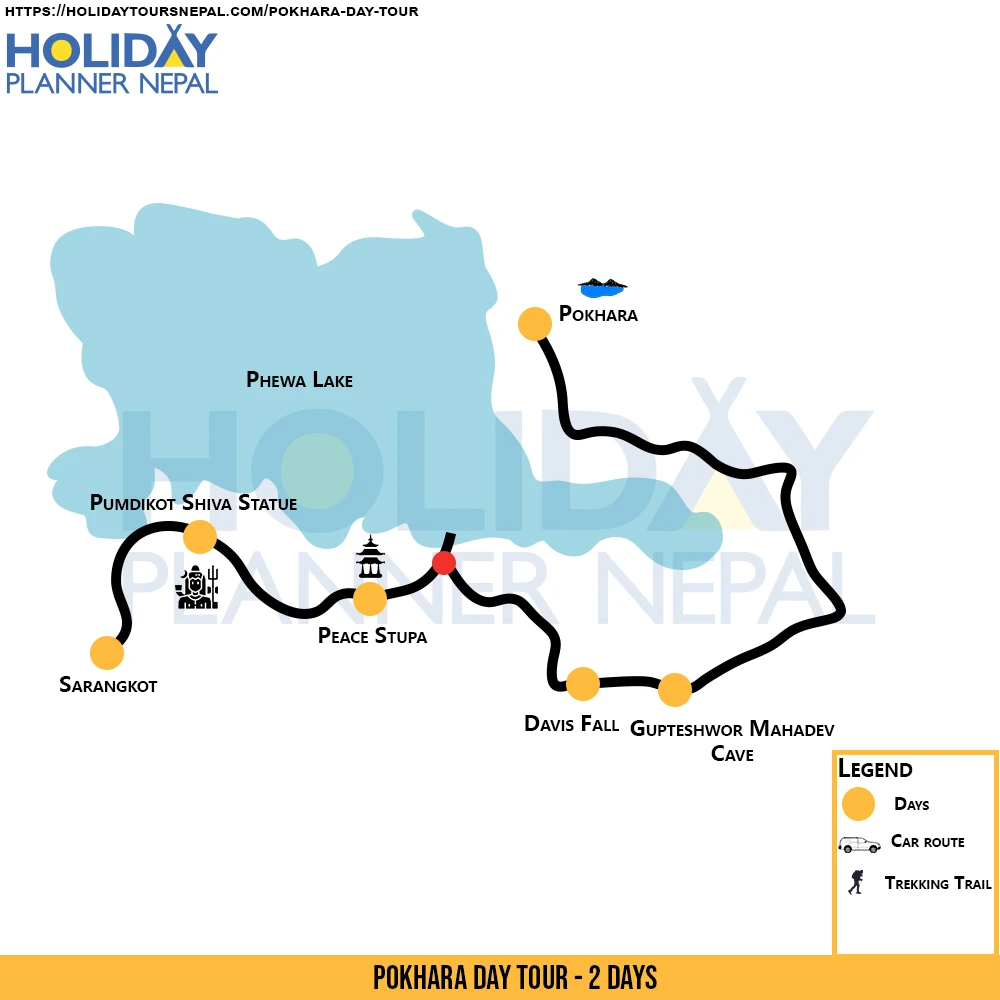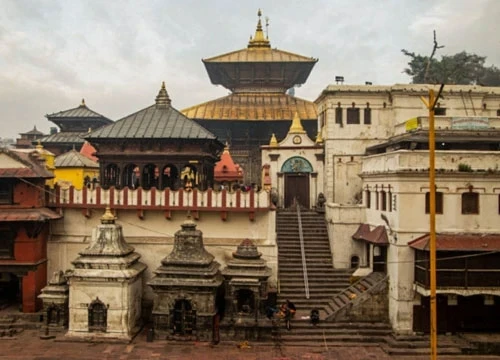Introduction Pokhara City Tour - 2 Days
Pokhara is Nepal's tourism capital, where adventure meets tranquility, and the mountains create the lakes.
Pokhara city tour is a blend of natural and cultural sites where visitors have an option of doing a full day or a half-day tour, including sunrise, cultural sites, hiking, adventure sports, or boating. Holiday tours Nepal has made this Pokhara city tour package by combining religious sites with the major attraction of Pokhara city, which includes the view of the Annapurna range, the water that flows beneath Pokhara city, a silent spot for meditation, and ending the day by boating in Phewa Lake, the heart of Pokhara, popularly known as the lakeside.
Pokhara is the tourism hub of Nepal. Pokhara is full of adventure, scenic beauty, mountain ranges, pilgrimage sites, and natural beauty. In this Pokhara city tour, visitors will experience a day tour that combines a view of an underground waterfall, which flows into the underworld through a cave, allowing them to see the water fall first and then the water flowing inside the cave with a visit to Pumdikot the 2nd highest statue of lord shiva and the Shiva lingas and from there heading towards the world peace pagoda.
Why should people visit Pokhara city?
Pokhara is one of the most beautiful, serene, and relaxing destinations in Nepal. Especially someone coming from a foreign country who wants to relax. Pokhara boasts stunning natural beauty, making it the adventure capital of Nepal, and is renowned for its relaxation and wellness. Pokhara has spiritual and cultural significance with peace pagodas, temples, and monasteries, and is the gateway to the Annapurna range. Pokhara boasts an ideal climate, making it one of the best spots for photography, with stunning sunrise and sunset views. It also offers a range of activities that cater to all types of people, ensuring excellent accessibility and hospitality.
The fact is, Pokhara is the only place in Nepal where people can get good facilities with a blend of nature. Whether it's adventure sports or getting lost in nature, Pokhara is the place where people can feel that this place is relaxing and worth it.
How does the Pokhara city tour start and end?
The Pokhara city tours begin with an early morning ride to Sarangkot, where trekkers will start their tour with a view of sunset from the Sarangkot hill. After completing breakfast, travelers will head towards Davis Falls and witness one of the biggest waterfalls. The fun fact is that all the water from the waterfall goes underground, which is why it is also called Patalo changa in Nepal.
After visiting Davis, fall travelers will proceed to Gupteshwor Mahadev, located in front of Davis Fall. There, visitors can witness the water flowing down and view the Shiva temple.
We start by taking a boat ride in Phewa Lake and visiting the Taal Barahi temple. Observe some puja rituals, understand the system, and then board the boat to hike to the base of Pumdikot hill. From there, visitors can see the best view of the whole Pokhara city along with Phewa Lake and the Annapurna range.
What are the entry fees for the tourism sites in Pokhara?
The entry fees for the Pokhara city tour vary by site and are different for different nationalities. The cost varies for Nepalese, SAARC (South Asian nations), and other countries, as detailed in the table below.
Place | Nepalese | SAARC Nation | Foreigners |
Davis Fall | NPR 50 | NPR 50 | NPR 100 |
Gupteshwor Mahadev | NPR 100 | NPR 100 | NPR 500 |
Phewa Lake boating | Starts from 500 | Starts from 500 | Starts from 500 |
World peace pagoda | Free | Free | Free |
Pumdikot Shiva statue | Free | Free | Free |
Why take a Pokhara city tour?
Pokhara is a city located in the Gandaki zone of Nepal and is the gateway to the Annapurna. The town is said to be surrounded by the water of Phewa Lake. The water from Phewa Lake, which passes through Davis Fall, reaches Gupteshwor Mahadev Cave and then flows underground, reaching various parts of the city before exiting to the river or other lakes, thereby giving the city a distinct aura.
During the Pokhara city tour, visitors will see Davis Fall and observe the flow and volume of water that flows from it. After that, visitors will head towards Gupteshwor Mahadev cave, where they will visit the Shiva temple and witness the water that is under the cave, and from there, it spreads underground to various parts of the city.
After coming out of the cave, head towards Pumdikot, where there is an enormous statue of lord shiva, the 2nd biggest statue.






